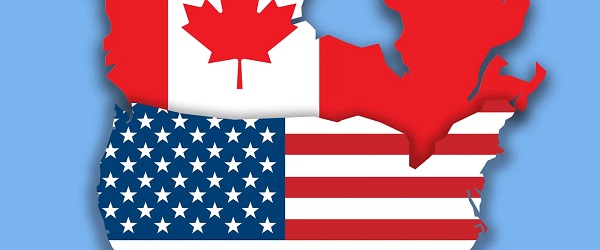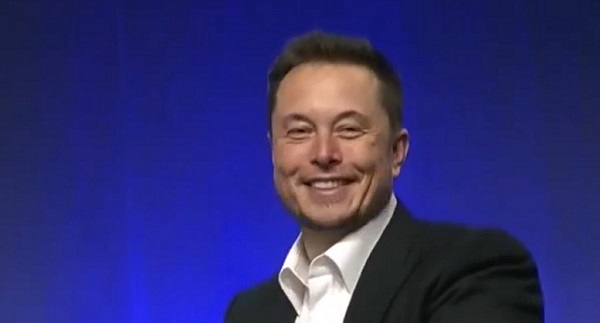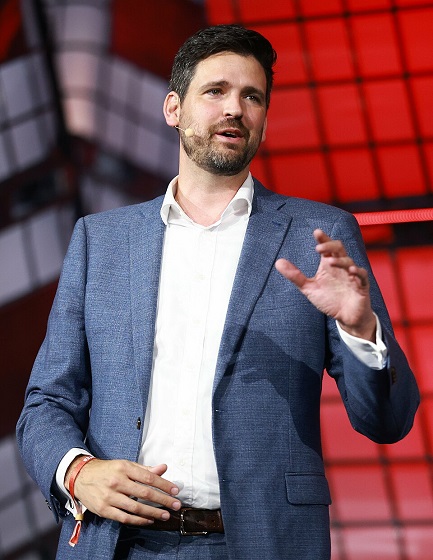Business
Canada falls further behind U.S. in race to attract top talent

From the Fraser Institute
By Jake Fuss
The United States Congress recently passed President Donald Trump’s “Big Beautiful Bill,” which among things extended and made permanent the income tax rate reductions and revised tax brackets first implemented in the 2017 Tax Cuts and Jobs Act. This should raise alarm bells for policymakers north of the border as Canada will continue to have uncompetitive personal income tax rates compared to our American counterparts, and fall even farther behind in the race to attract entrepreneurs, professionals, investors and top talent.
Jurisdictions around the world compete to attract and retain top talent including entrepreneurs, engineers and doctors, who contribute significantly to the economy. While taxes are one of many factors these professionals consider when deciding where to live and work, jurisdictions with relatively low taxes generally enjoy a competitive edge in attracting these individuals.
According to research, taxes have the largest effect on mobility for high-skilled individuals. For example, relatively high personal income tax (PIT) rates in one jurisdiction incentivize workers to reduce their tax burden by relocating to a lower tax jurisdiction. This creates competition between jurisdictions, as the lowest tax jurisdictions are typically more successful at attracting and retaining professionals, business owners and entrepreneurs.
Indeed, according to Moretti and Wilson (2017), the number of “star” scientists in a state increases by 0.4 per cent annually if the after-tax income in that state increases by 1 per cent due to a reduction in PIT rates. Put differently, high-income scientists are acutely sensitive to personal income taxes and make decisions about where to work in part based on the level of taxation in a given jurisdiction. Similarly, Agrawal and Feremny (2018) found workers in finance, real estate and health care are more sensitive to taxes and more likely to migrate than other professionals.
Research from Akcigit et al. (2015) similarly discovered “superstar” inventors are significantly affected by top tax rates when deciding where to locate. Another study (Iqbal, 2000) on international mobility examined the exodus of Canadian professionals to the U.S. and determined that high-skilled Canadians respond strongly to tax rates—specifically that a “1 percent increase in the existing tax gap (measured by the ratio of total tax revenue to GDP) can push 2 percent more Canadians toward the United States.”
The effect also shows up in international professional sports. Henrik Kleven and his colleagues (2013) examined data on European soccer players and found countries with low taxes attract more “high ability players” that have high rates of compensation. Among NHL fans and pundits, there’s been recent discussion about the Florida Panthers having an advantage in attracting the most talented hockey players because the players do not pay state-level income taxes.
Florida certainly has wonderful beach weather and other luxuries, but its advantage in tax rates give professional hockey teams such as the Panthers and Tampa Bay Lightning a competitive edge in recruiting top talent. Big names such as Sam Bennett, Aaron Ekblad and Brad Marchand recently re-upped with the Panthers on bargain contracts, in part due to relatively low tax rates. Another big name, Mitch Marner, left Toronto this summer for greener pastures and substantially lower taxes (with sunny weather) in Nevada by signing a lucrative eight-year contract with the Las Vegas Golden Knights.
Moreover, five of the last six Stanley Cup-winning teams have come from U.S. states that do not impose state level income taxes (the Colorado Avalanche being the only exception). And again, although taxes are not the sole factor in any player’s career decisions, they are undoubtedly a key reason why these teams successfully manage the salary cap and build the best possible roster.
Why is this relevant for Canada?
Our personal income tax (PIT) rates are uncompetitive compared to other advanced countries that we directly compete with for talented people, particularly the U.S. Among 38 countries within the Organization for Economic Cooperation and Development (OECD), Canada’s personal income tax system is ranked the 8th-least competitive. And Canada’s top combined (federal and provincial) PIT rate was the fifth-highest among those same 38 high-income countries in 2024 as illustrated in the chart below. The country’s combined PIT rate is higher than in countries such as Australia (17th), the United Kingdom (20th) and the U.S. (23rd). Again, this makes Canada less attractive to professionals, entrepreneurs and business owners who drive innovation, investment and private-sector job creation—all things fundamental to the economy.
Over the last decade, tax hikes at the federal and provincial levels have increased top PIT rates in every province. For example, the Trudeau government in 2015 raised the top federal PIT rate from 29 per cent to 33 per cent. Provinces such as Alberta, British Columbia, and Newfoundland and Labrador followed suit.
The Carney government has shown little interest in correcting this problem. While the prime minister cancelled Trudeau’s planned capital gains tax hike, Prime Minister Carney has done little else to attract or retain top talent, despite the recent change to the bottom federal PIT rate from 15 per cent to 14 per cent on income below $57,375. While this move may slightly help improve Canada’s competitiveness for lower- and lower-middle-income workers, it does almost nothing to make the country more attractive to doctors, scientists, engineers and entrepreneurs (and yes, athletes).
When Trump’s Big Beautiful Bill helped solidify the U.S. advantage, it exacerbated Canada’s competitiveness problem. If we compare PIT rates in the 10 Canadian provinces to the 50 U.S. states and the District of Columbia, the scale of our problem becomes apparent (see second chart below). Specifically, when ranking the top combined (federal and provincial/state) PIT rates in 2025, Canadian provinces hold nine of the top 10 highest rates among the 61 North American jurisdictions. Saskatchewan (at 15th highest) is the only province to escape the top 10.
Newfoundland and Labrador has the highest top PIT rate (54.80 per cent) among Canadian and U.S. jurisdictions followed by Nova Scotia (54.00 per cent), Ontario (53.53 per cent), Quebec (53.31 per cent) and New Brunswick (52.50 per cent) compared to top PIT rates as low as 37.00 per cent in Texas, Florida, Nevada, Washington and Tennessee, which impose no state-level personal income taxes.
In addition to the rate differences, there are also differences in income thresholds. For instance, in Ontario the top combined PIT rate (53.53 per cent) kicks in at C$253,414 compared to C$1,384,538 in California, a notorious high-tax state. That difference in the income threshold matters for professionals, business owners and entrepreneurs when deciding where to live.
In addition to top earners, Canada’s PIT rates are also uncompetitive at other income levels. At C$150,000, Canadians in all 10 provinces face higher PIT rates than Americans in every U.S. state (see chart below), with the highest rates in Quebec (47.46 per cent), Prince Edward Island (45.00 per cent) and Ontario (44.97 per cent). While Albertans enjoy the lowest rate (36.00) in Canada, it’s still higher than in California (33.30 per cent). And at C$150,000, nine U.S. states have combined (federal and state) income tax rates at 24.0 per cent.
If we move down the income ladder to C$75,000 (see chart below), Canadian provinces hold nine of the top 10 highest PIT rates, starting with Nova Scotia (37.17 per cent), P.E.I. (37.10 per cent) and Quebec (36.12 per cent). Americans living in geographically similar states such as New Hampshire (22.00 per cent), Vermont (28.60 per cent) and Maine (28.75 per cent) all face significantly lower PIT rates than their Canadian counterparts in the Atlantic region. Oregon (30.75 per cent) is the only U.S. jurisdiction in the top 10 and B.C. (28.20 per cent) is the only Canadian province outside of the top 10.
Finally, PIT rates in Canada are also uncompetitive at C$50,000 (see chart below). Again, Canadian provinces hold nine of the top 10 highest rates while the remaining province sits at 12th in the rankings. Nova Scotia (28.95 per cent) once again has the highest rate followed by Newfoundland and Labrador (28.50 per cent), P.E.I. (27.47 per cent) and Manitoba (26.75 per cent).
Ontarians face the lowest rate in Canada at this income level but still pay a higher rate than Americans in 48 states plus the District of Columbia. In Nevada, New Hampshire, Florida and Texas, workers only pay a 12.00 per cent tax rate at C$50,000.
Across all income levels examined, a couple of trends emerge. First, residents in energy-producing provinces such as Alberta, Saskatchewan, and Newfoundland and Labrador consistently pay PIT rates that exceed those in comparable energy-driven states such as Texas, Oklahoma, Alaska, Wyoming, North Dakota, West Virginia and New Mexico that directly compete with these provinces for investment and talent. For example, Alberta’s top combined PIT rate is 11.00 percentage points higher than in Texas, Wyoming and Alaska. Newfoundland and Labrador fares even worse with top PIT rates 17.40-percentage points higher than in those U.S. jurisdictions.
Another obvious trend is that Canadian jurisdictions have higher income tax rates, at both the lower and top end of the income spectrum, than virtually all U.S. states. In other words, the provinces with the lowest rates are generally less competitive than states with the highest tax burdens in the U.S. That’s a big problem for a Canadian economy already struggling to increase productivity, innovation and living standards. These comparably high tax rates reduce the incentives to save, invest and start a business—all key drivers of prosperity—while deterring top talent from locating in Canada.
The problem then worsens when we look beyond taxes towards the multitude of regulatory barriers businesses must sift through, which scares away investors and entrepreneurs. According to the Canadian Federation of Independent Business, Canadian businesses spent an estimated $51.5 billion, and an average of 735 hours, on regulatory compliance in 2024. Imagine what business owners and entrepreneurs could do with their time and money spent on innovation instead. Add in relatively high housing prices and cold winter weather in many parts of the country, and it’s difficult to see why professionals, business owners and entrepreneurs would consider relocating to a Canadian city today.
Make no mistake, Canada has immense potential. We have an abundance of natural resources, a highly educated workforce and many young people clamoring for a better future. But we cannot realize that potential if our policymakers are not bold and daring enough to change course.
Creating an environment to foster higher living standards for Canadians means we must meaningfully reduce taxes to make us substantially more competitive with our American neighbours and other industrialized countries around the globe. Tinkering around the edges of our tax system with a small tax reduction here or there simply will not get it done. To attract and retain top talent, Ottawa and the provinces must give high-skilled people a robust reason to call Canada home. Why not start with making Canada the most competitive tax system in the world?
Business
Bill Gates Gets Mugged By Reality


From the Daily Caller News Foundation
You’ve probably heard by now the blockbuster news that Microsoft founder Bill Gates, one of the richest people to ever walk the planet, has had a change of heart on climate change.
For several decades Gates poured billions of dollars into the climate industrial complex.
Some conservatives have sniffed that Bill Gates has shifted his position on climate change because he and Microsoft have invested heavily in energy intensive data centers.
AI and robotics will triple our electric power needs over the next 15 years. And you can’t get that from windmills.
What Bill Gates has done is courageous and praiseworthy. It’s not many people of his stature that will admit that they were wrong. Al Gore certainly hasn’t. My wife says I never do.
Although I’ve only once met Bill Gates, I’ve read his latest statements on global warming. He still endorses the need for communal action (which won’t work), but he has sensibly disassociated himself from the increasingly radical and economically destructive dictates from the green movement. For that, the left has tossed him out of their tent as a “traitor.”
I wish to highlight several critical insights that should be the starting point for constructive debate that every clear-minded thinker on either side of the issue should embrace.
(1) It’s time to put human welfare at the center of our climate policies. This includes improving agriculture and health in poor countries.
(2) Countries should be encouraged to grow their economies even if that means a reliance on fossil fuels like natural gas. Economic growth is essential to human progress.
(3) Although climate change will hurt poor people, for the vast majority of them it will not be the only or even the biggest threat to their lives and welfare. The biggest problems are poverty and disease.
I would add to these wise declarations two inconvenient truths: First: the solution to changing temperatures and weather patterns is technological progress. A far fewer percentage of people die of severe weather events today than 50 or 100 or 1,000 years ago.
Second, energy is the master resource and to deny people reliable and affordable energy is to keep them poor and vulnerable – and this is inhumane.
If Bill Gates were to start directing even a small fraction of his foundation funds to ensuring everyone on the planet has access to electric power and safe drinking water, it would do more for humanity than all of the hundreds of billions that governments and foundations have devoted to climate programs that have failed to change the globe’s temperature.
Stephen Moore is a co-founder of Unleash Prosperity and a former Trump senior economic advisor.
Automotive
Elon Musk Poised To Become World’s First Trillionaire After Shareholder Vote


From the Daily Caller News Foundation
At Tesla’s Austin headquarters, investors backed Musk’s 12-step plan that ties his potential trillion-dollar payout to a series of aggressive financial and operational milestones, including raising the company’s valuation from roughly $1.4 trillion to $8.5 trillion and selling one million humanoid robots within a decade. Musk hailed the outcome as a turning point for Tesla’s future.
“What we’re about to embark upon is not merely a new chapter of the future of Tesla but a whole new book,” Musk said, as The New York Times reported.
Dear Readers:
As a nonprofit, we are dependent on the generosity of our readers.
Please consider making a small donation of any amount here.
Thank you!
The decision cements investor confidence in Musk’s “moonshot” management style and reinforces the belief that Tesla’s success depends heavily on its founder and his leadership.
Tesla Annual meeting starting now
https://t.co/j1KHf3k6ch— Elon Musk (@elonmusk) November 6, 2025
“Those who claim the plan is ‘too large’ ignore the scale of ambition that has historically defined Tesla’s trajectory,” the Florida State Board of Administration said in a securities filing describing why it voted for Mr. Musk’s pay plan. “A company that went from near bankruptcy to global leadership in E.V.s and clean energy under similar frameworks has earned the right to use incentive models that reward moonshot performance.”
Investors like Ark Invest CEO Cathie Wood defended Tesla’s decision, saying the plan aligns shareholder rewards with company performance.
“I do not understand why investors are voting against Elon’s pay package when they and their clients would benefit enormously if he and his incredible team meet such high goals,” Wood wrote on X.
Norway’s sovereign wealth fund, Norges Bank Investment Management — one of Tesla’s largest shareholders — broke ranks, however, and voted against the pay plan, saying that the package was excessive.
“While we appreciate the significant value created under Mr. Musk’s visionary role, we are concerned about the total size of the award, dilution, and lack of mitigation of key person risk,” the firm said.
The vote comes months after Musk wrapped up his short-lived government role under President Donald Trump. In February, Musk and his Department of Government Efficiency (DOGE) team sparked a firestorm when they announced plans to eliminate the U.S. Agency for International Development, drawing backlash from Democrats and prompting protests targeting Musk and his companies, including Tesla.
Back in May, Musk announced that his “scheduled time” leading DOGE had ended.
-

 Energy2 days ago
Energy2 days agoEby should put up, shut up, or pay up
-

 Daily Caller2 days ago
Daily Caller2 days agoUS Eating Canada’s Lunch While Liberals Stall – Trump Admin Announces Record-Shattering Energy Report
-

 Business2 days ago
Business2 days agoThe Liberal budget is a massive FAILURE: Former Liberal Cabinet Member Dan McTeague
-

 COVID-192 days ago
COVID-192 days agoFreedom Convoy leader Tamara Lich to appeal her recent conviction
-

 Business2 days ago
Business2 days agoCarney’s budget spares tax status of Canadian churches, pro-life groups after backlash
-

 Justice2 days ago
Justice2 days agoCarney government lets Supreme Court decision stand despite outrage over child porn ruling
-

 espionage1 day ago
espionage1 day agoU.S. Charges Three More Chinese Scholars in Wuhan Bio-Smuggling Case, Citing Pattern of Foreign Exploitation in American Research Labs
-

 Business18 hours ago
Business18 hours agoCarney budget doubles down on Trudeau-era policies













